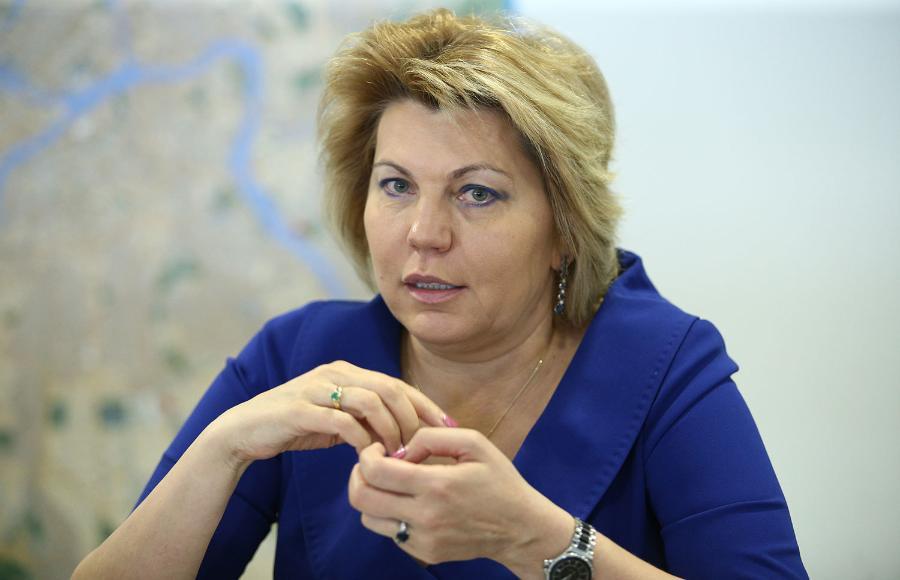Harvard Business Review Russia
“The most important thing is word of mouth”

Svetlana Vinogradova became CEO of the country's largest car dealer, Rolf, a little over a year ago, and before that she had worked there for 23 years. She took over the company after the Russian market fell 11% in 2016, but Rolf fared remarkably well during the crisis, with sales up 16% that year. Since then, growth has slowed down, but Vinogradova, in an interview with Vedomosti, which we publish with cuts, explained why she was pleased with the results.
Probably, there should be some kind of legend, but everything is prosaic. On January 24 [2017], I was leading a training, so I dropped the call from management. I came to my office at 7 o'clock. I called back and learned that a decision had been made on my appointment. I said that I needed some time to finish my business at Rolf Yug, to somehow relax. It was Friday evening. They answered me: “Of course. And from Monday you start.
And with whom was the conversation, who called?
Chairman of the Board of Directors Tatyana Lukovetskaya (former CEO of Rolf, now Chairman of the Board of Directors. – Ed.).
Did you know that a promotion awaits you?
No, I was in shock.
Are you happy?
I had mixed feelings. But all appointments were about the same. Some come and say: I've been in the same position for many years, they don't promote me. It’s the opposite for me: I’m just starting to do something, the first results appear – and immediately a call or someone comes and says: “Let’s go there tomorrow.”
Who gave you tasks?
The Board of Directors, which approves the goals and strategy of the company. The goals at that time seemed very ambitious to me, it was scary. But now that the results have been summed up, I will say with pride that we have achieved them.
What were the main goals?
We had a big problem with stocks. It was necessary not just to sell them quickly – we built a new system, began to control not the redeemed stocks, but the placement of orders. Guessing market trends by key models is the main thing. For many companies that have left the market, the main problems are high debt load due to the large number of stocks. Now the average turnover of a car is 21 days.
How much was it before?
Approximately 23 days, but two days for a company that sold more than 84,000 new cars and more than 48,000 used cars in a year is a saving of hundreds of millions of rubles a year.
What are the new goals?
We have a strategy until 2020: to be the leader in sales of new cars, used cars, service, the No. 1 employer and the most customer-oriented company in the market.
Do you often consult with the founder of the company, Sergey Petrov?
I call him quite often, there were moments that I consulted. The last time we talked was a couple of weeks ago. We discussed financial performance.But Sergey is more interested in the atmosphere in the team: how people share our values, whether we are ready to offer new services to clients, whether we keep up with the times.
In 2017, sales of new cars in the country grew by 12%, and you grew by 15%. In 2016, you grew by 16%, when the market, on the contrary, fell by 11%. It turns out that they worked more efficiently during the crisis?
You can not take as a basis the sales figure in pieces. A lot of companies got into financial trouble precisely because they focused on the pieces. Although, of course, this cannot be completely abandoned: the more pieces are sold, the more we sell additional equipment, financial products, and the more customers return to the service, trade in, etc. But we do not want to sell pieces at any cost. We consider the performance of our business from the main financial indicators – EBITDA and net income. Last year, the total revenue of our company increased by 21.3% to 193.3 billion rubles, EBITDA – by 24.1% to 9 billion rubles, net profit – more than 2.5 times to 3.7 billion rubles .
In 2016, revenue grew by 30%, last year growth slowed down by 10%. Are you satisfied anyway?
We focus on profitability, not revenue.
What is the average margin per car?
It differs greatly from brand to brand.
In the mass segment, cars are sold at a loss?
No, it's not. We sell cars in plus.
What is the profitability of sales of the most popular model – Hyundai Creta?
On average, the margin is about 200,000 rubles. But we are talking about the entire margin: this includes additional equipment and service.
How much do you earn from the sale of one new car in the mass segment?
The same number as the rest [dealers]. There are models that are sold at a loss. If an order was incorrectly placed and cars accumulated in the warehouse, then we sell at a loss. There is no other option. The later we sell, the greater the minus. We control stock 60+ [days], 90+, 120+. Therefore, everything is built so that the car is sold as quickly as possible. Ideally, a new car would bring at least 4%. Although, it happens that both premium and mass models are sold with a larger margin.
If the consignment expires, you have to pay a fine – what do you do?
If the term comes to an end, the car still needs to be redeemed. There are manufacturers that make it easier to work on paid consignment, because the interest on the consignment (or penalties, as you call it) is much lower than the bank rate.
Are there brands that constantly confuse you? Or is it always possible to sell the car?
Every brand has liquid and non-liquid cars. And there are brands that are pushing the drain. I would not like to name them, because we work with them.
Do you focus on the secondary market?
Yes. in 2017 we sold 84,225 units. new cars and 48,158 used cars.
Marginality is, of course, higher for used cars, but they bring less revenue in terms of revenue.
This does not scare us, because – I say again – we are not for revenue, but for profitability. Waste cars are more profitable.
In 2015, in an interview with Vedomosti, your predecessor Lukovetskaya said that the goal is to sell two used ones for one new car. Now it turns out the other way around.
Given the market trends, the goal has become less ambitious. By July 2018, we must reach the ratio of 1: 1 in the company. Today, several dealerships are selling mileage cars more than new ones. For example, in Rolf Vitebsky in St. Petersburg the ratio in February 1: 1.25. By July, I want all dealerships to reach a similar ratio.
What are you doing for this?
We have been engaged in this project for a long time, from July 1, 2017, hence the goal – in a year. There are a lot of directions: IT development, and the first academy for the preparation of employees of this area, and the development of additional trading floors.
How does this happen: a person comes to the dealer center behind a new car, and you offer him with mileage?
We always find out the needs of the client. Often we can offer him more than he planned, while not always more expensive. He comes with one car, and then, after communicating with the seller, he leaves for a higher class car. And he is happy, and we are happy, and everyone is happy.
Then there will be 1: 2?
Will watch. It will be much more difficult to grow further, because sales of new cars will increase, and in 2019 a shortage of used cars will begin-due to failure in sales in 2014-2015.
What is the ceiling of a car sales through official dealers?
The ceiling is still very far away. Up to 80% of mileage cars can be sold through official dealers.
How do you attract customers in the company?
The most important thing is that I disappoint many – this is a word of mouth. We are 26 years in the market, we have many customers who make the 7-8th purchase. These people are our main guides, our main marketing.
On the market they say that Rolf has huge marketing budgets that only Rolf can afford. How much do you spend per year?
We have all the numbers very large. In terms of ratio of marketing and revenue costs, this is a market ratio.
How much is still?
0.7%. Marketing is divided into strategic and tactical. We invest a lot in tactical, never use television and almost do not use radio. Marketing is not only attracting traffic, but also convenient services for our customers. Recently launched a chatbot.
Chatbot is an outdated thing.
But this is also marketing costs.
As a result, your marketing gives the result you are counting on?
Yes, we attract a lot of customers. But we are unhappy with our marketing costs and plan to reduce them. Since the company is decentralized, we cannot lower the reduction in marketing costs on top.



